Estimating ice systematics with distance from a track to CoG of an event

Introduction
Andrea has estimated the systematics on ice for his UHE analysis based on
the change of the propagation length. The detail is sammerized in
this page.
I also followed his prescription.
Distance distribution from a track to CoG of an event (GZK signal weighted)
At first, in order to evaluate the typical distance from a track to an event,
a distribution of distance from a track (or a cascade vertex) to CoG of an event for GZK signal is checked.
The distributions are shown below for each flavor.
As seen, the distance to a track is shorter than one to a cascade vetex.
Distance between a CoG to a cascade vertex for nu_e extends to 200 m and more.
These are events that interact outside of the detector.
The distance between a track to CoG for a track can be nearer even
in such outside events case. That's why a distance between CoG and a track is
shorter than the one for a cascade.
In case of nu_mu and nu_tau, the distance between a starting track and a CoG
can be smaller than one for the interaction vertex, but I took the distance
between a CoG and a vertex to be conservative.
|
The distance distribution from a muon track
to CoG of an event
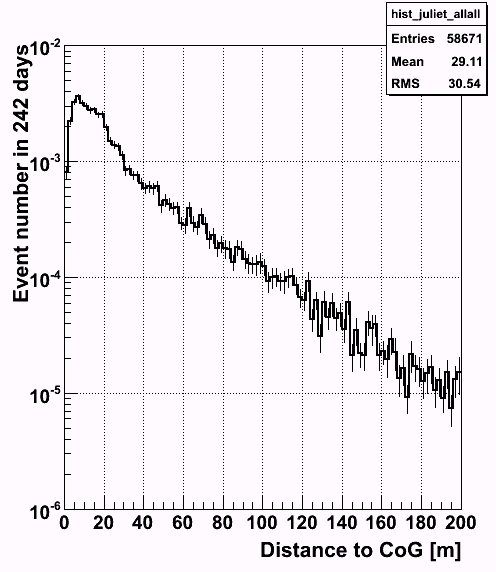
|
The distance distribution from a tau track
to CoG of an event
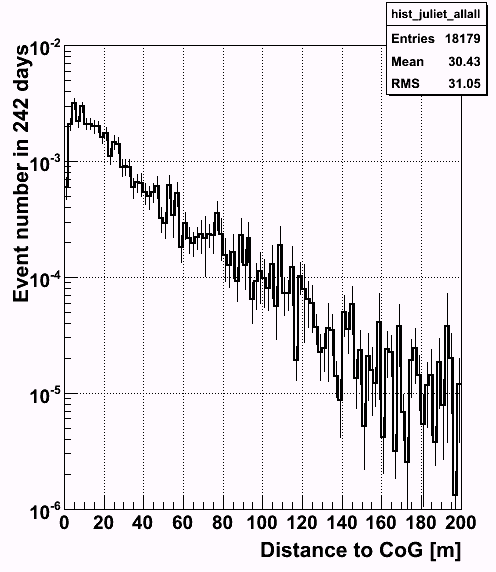
|
|
The distance distribution from a cascade vertex
to CoG of an event for nu_e
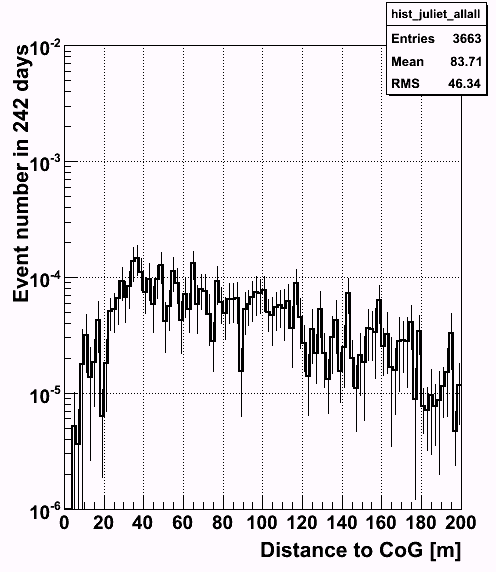
|
The distance distribution from a cascade vertex
to CoG of an event for nu_mu
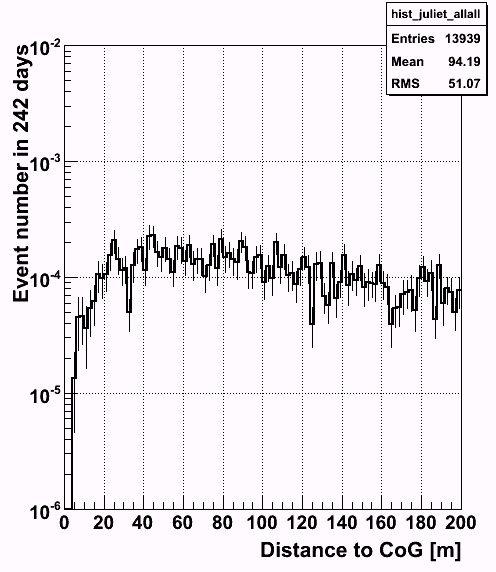
|
The distance distribution from a cascade vertex
to CoG of an event for nu_tau
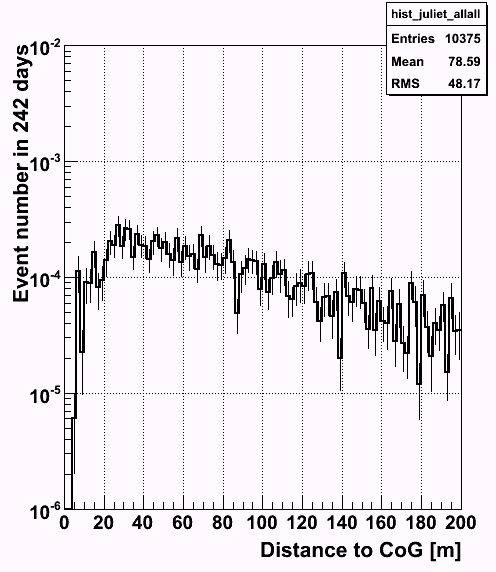
|
There are two distributions for the distance before and after the final cut.
The mean distance is 43 m after the cut, though the peak is less than 10 m.
The distribution after the final cut is sharper than the one before cut,
constraining to contained events.
|
The distance distribution from a track (or a cascade vertex)to CoG of an event
black: before the cut (NPE<10^4), red: after the final cut
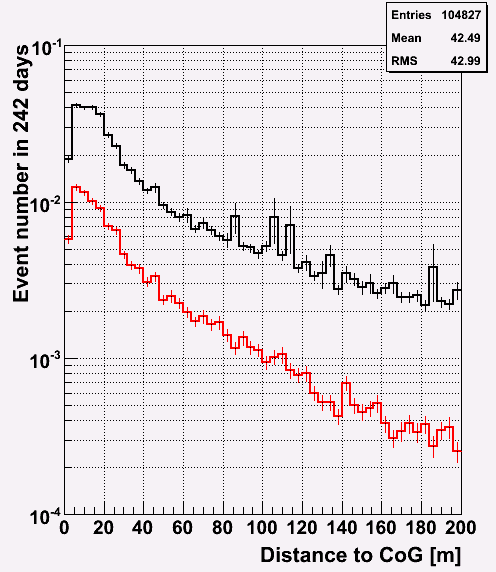
|
The in-ice enregy, NPE and ZA dependence is shown below.
|
The distance from a track to CoG of an event Vs energy
The in-ice energy dependence is seen.
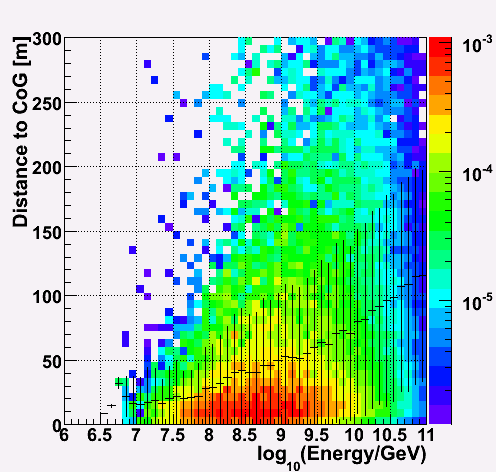
|
The distance from a track to CoG of an event Vs Npe
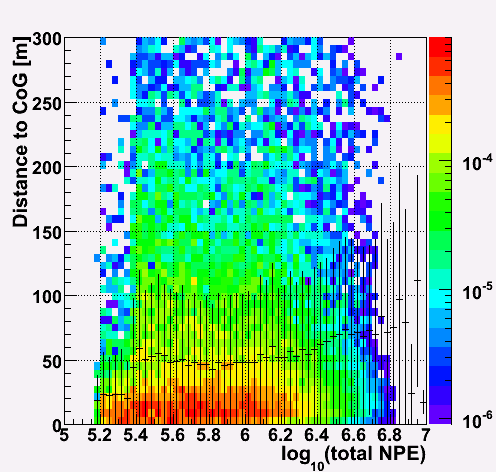
|
The distance from a track to CoG of an event Vs zenith angle
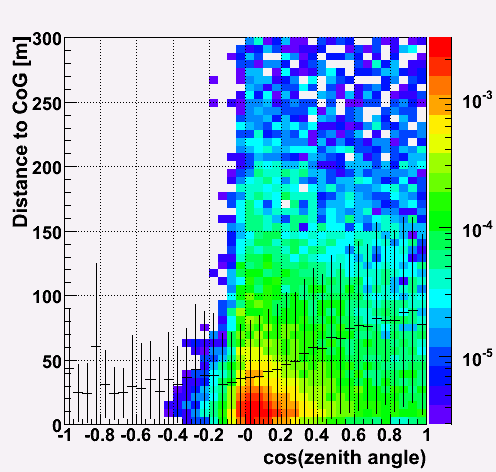
|
Change in light yield by changing a propagation length (GZK signal weight)
According to the prrescription done by Andrea (Kurt), I also calculated a
change in light yield by a change of the propataion length with the same manner.
The change of light yield is 10% and 23% when propagation length is changed by
5 and 10%, respectively. This is still smaller number compared to the number
we found in SC study (~35%).
|
Change in light yield as a function of change in propagation length.
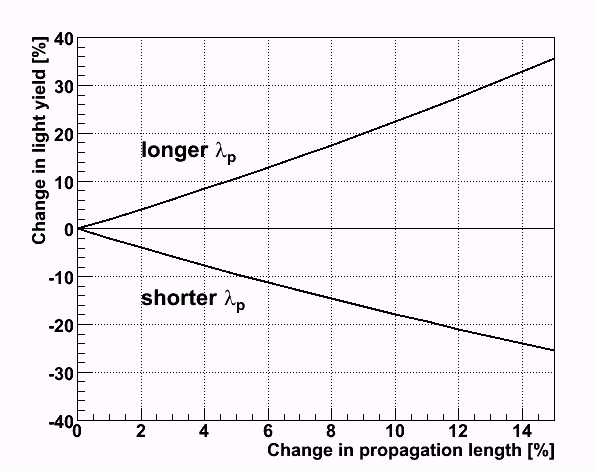
|
Change in light yield Vs neutrino energy at surface
It is more useful to derive the model independent systematic change
in light yield as a function of neutrino energy at surface.
The distance to CoG Vs neutrion energy is shown below.
|
Distance to CoG Vs neutrino energy
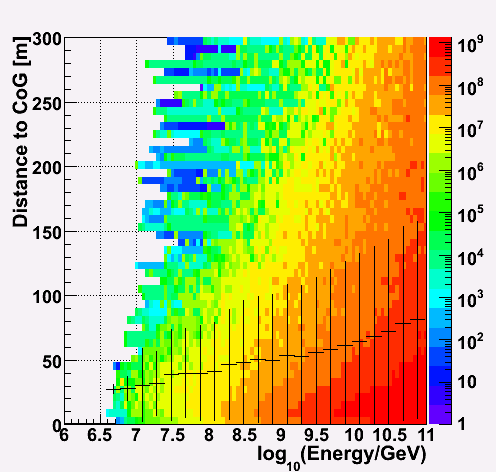
|
Then, the light yield change is calculated for each energy by taking the same
procedure described above, assuming the error of the light propagation length
is 10%.
The systematic error in light yield depends on neutrino energy, and
ranges from 10 to 30 % for 10^7-11 GeV of neutrino energy.
|
Change in light yield Vs neutrino energy at surface (10% error in propagation is assumed)
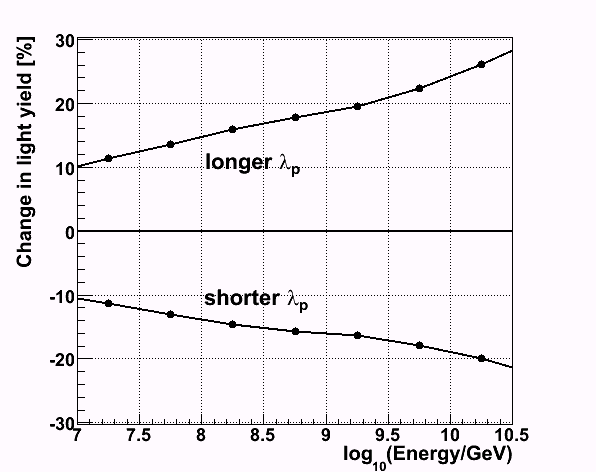
|

Keiichi Mase
Last modified: 2009-05-27 07:55:11











